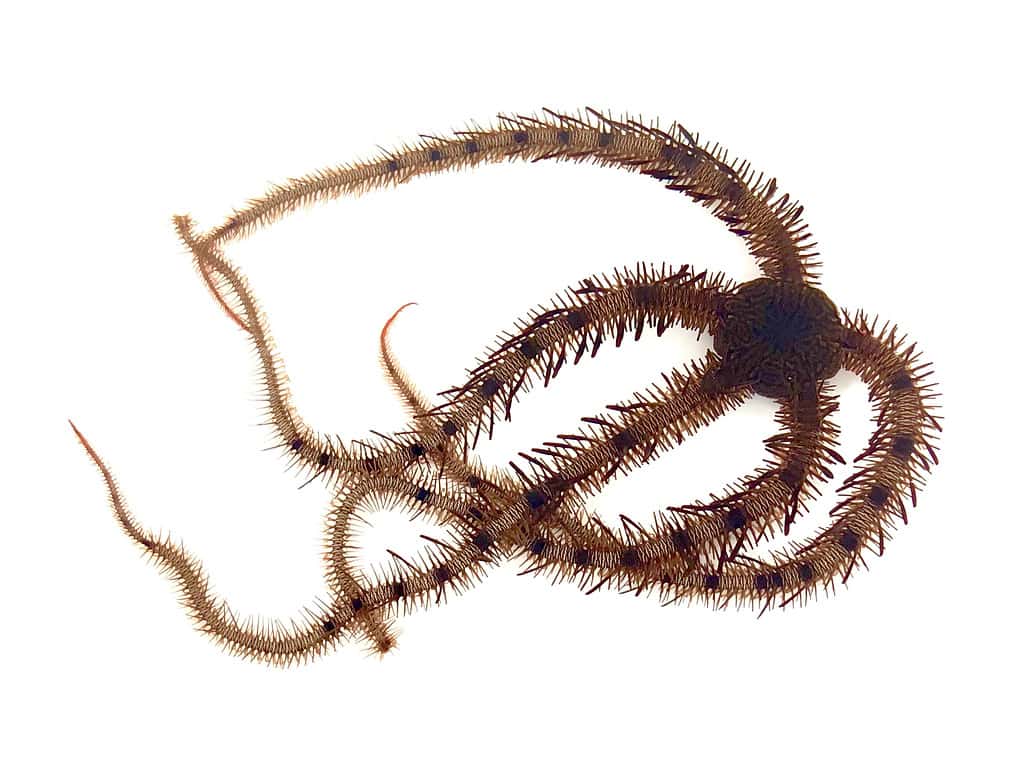We tend to associate intelligence with large brains, but a group of headless animals is proving us wrong. Brittle stars, a relative to sea stars, have no brains at all and can still manage to learn through experience, a new study found. Researchers placed them in a tank and recorded their behavior, studying their learning process for the first time.

Brittle stars spend most of their time hiding under rocks and in crevices in the ocean or burrowing into the sand. Usually described as “seafloor ecosystem engineers,” they play a key role in the food web — reshaping the sediment shape of the seafloor. They use their mouths (found on the underbelly of their disks) to eat small organisms.
These shy creatures have no brain, just nerve cords that run down through each of their five wiggly arms, joining to form a ring near the mouth. “There’s no processing center,” Dr. Julia Notar, lead author of the new study, said in a news release. “Each of the nerve cords can act independently. It’s like instead of a boss, there’s a committee.”
For brittle starts, that seems to be enough to learn by association, Notar and her colleagues found. This type of learning involves associating different stimuli in a process known as classical conditioning. An example is Pavlov’s dog experiments, which showed dogs fed at the ringing of a bell would start drooling when listening the sound.
We humans also do this. When we hear the “ding” of a smartphone over and over again with each new alert, eventually the sound gets a special meaning. Just hearing someone else’s phone ping with the same sound as yours it usually enough to make us each for our own phone in anticipation of the next notification.
Classical conditioning has been proven in starfish in previous studies. However, most echinoderms, a group of about 7,000 species that includes brittle stars, starfish, sea urchins and sea cucumbers, haven’t been tested. To find out if brittle stars could also learn, the researchers placed 16 black brittle stars in individual water tanks and recorded them.
Half were trained by dimming the light for 30 minutes whenever the animals were fed. Every time the lights went out, the researchers would put a morsel of shrimp in the tanks, placed out of reach. The other half got just as much shrimp and also had a 30-minute dark period but never at the same time, eating under lit conditions.
In both light and darkness, the animals hid behind the filters in their tanks, emerging only during mealtime. However, it was exclusively the trained brittle stars that developed an association between darkness and food. By the end of the 10-month experiment, whenever the lights went out, they came out of hiding even before food was placed there.
Notar said the results are exciting as classical conditioning hadn’t previously been seen in this group of animals. “Knowing that brittle stars can learn means they’re not just robotic scavengers like little Roombas cleaning up the ocean floor,” Notar said. “They’re potentially able to expect and avoid predators or anticipate food because they’re learning about their environment.”
The study was published in the journal Behavioral Ecology and Sociobiology.





